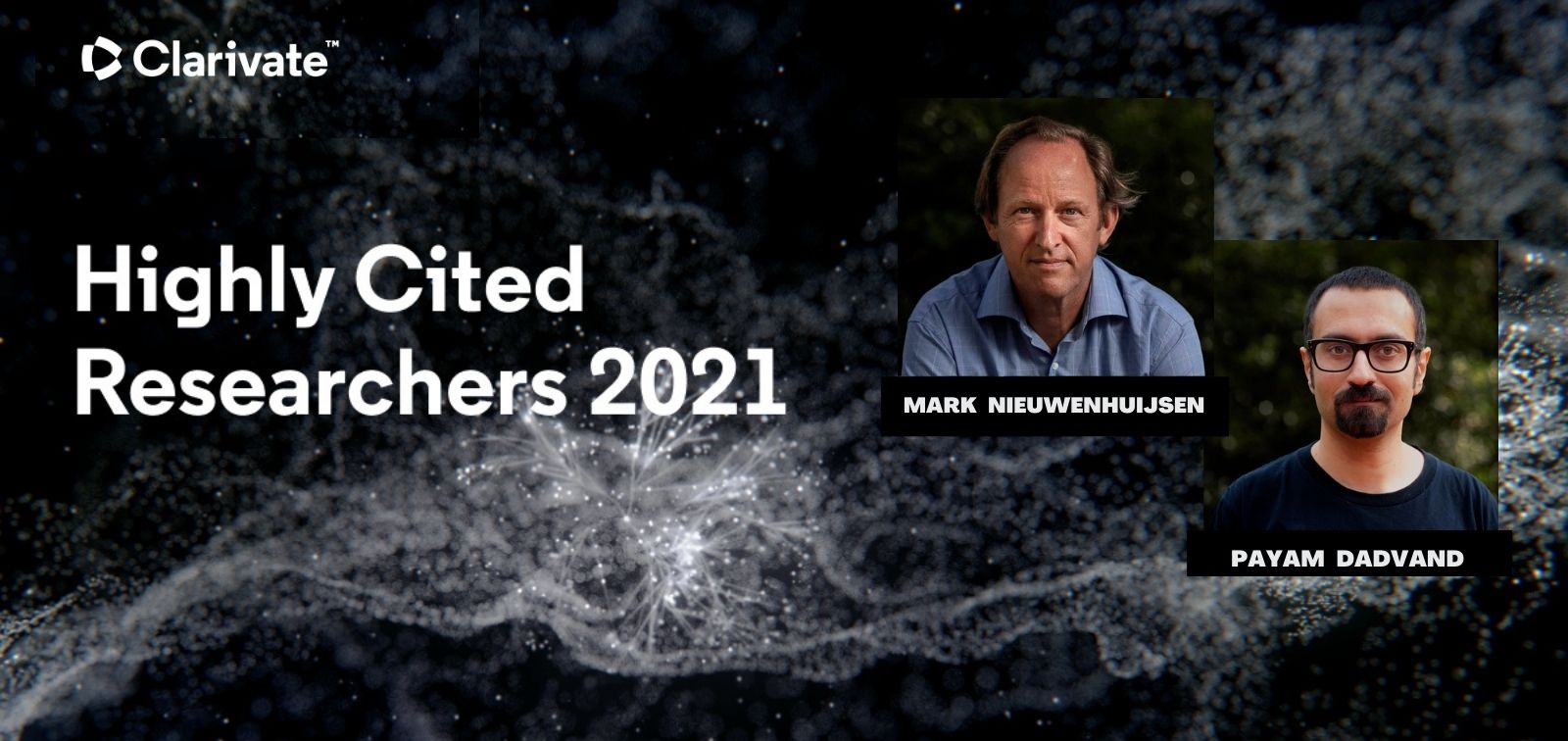Mark Nieuwenhuijsen and Payam Dadvand, on the Highly Cited Researchers List again
Nieuwenhuijsen is in the prestigious ranking for the fourth year in a row and Davdand, for the second one
16.11.2021
Two ISGlobal researchers, Mark Nieuwenhuijsen and Payam Dadvand, have been included in the Highly Cited Researchers list of this year, repeating as community-wide influencers as both aren’t new in the ranking. Since 2001, the list identifies global research scientists and social scientists who demonstrate exceptional impact – reflected through their publication of multiple papers frequently cited by their peers.
Mark Nieuwenhuijsen is on the list for the fourth consecutive year, and in two of the award categories: Environment and Ecology and Social Sciences. He is Director of the Urban Planning, Environment and Health Initiative at ISGlobal, where he also leads the Air Pollution and Urban Environment research programme. He has authored more than 500 publications and edited 8 books. He is also Editor in Chief for Environment International and President of the International Society of Environmental Epidemiology. In 2018, he received the John Goldsmith Award, the highest honour awarded in the field of environmental epidemiology. An expert in environmental exposure assessment, epidemiology and health impact assessment, Nieuwenhuijsen has focused on the study of healthy urban living throughout this career.
“It is fantastic to see that our scientific papers get cited so often and many thanks to my team and collaborators who made this possible”, commented Nieuwenhuijsen. “Certainly we hope that this scientific work will be translated into practice with better urban and transport planning, with lower air pollution and noise levels and more green space and physical activity and less negative health impacts. We need more sustainable, liveable and healthy cities that can be enjoyed by all groups in society and that promote health.”
Davdand, for the second year in a row
Payam Dadvand is on the list for the second consecutive year, in the Cross-Field category. He is a medical doctor by training and has a PhD in environmental epidemiology. For the last decade he has conducted pioneering studies on the impacts of both environmental stressors (e.g. air pollution) and environmental mitigation measures (e.g. green spaces) on maternal and child health applying his expertise in using remote sensing data, GIS-based spatial analytical methods, and spatiotemporal modelling approaches. He is currently an editor for the Environmental Pollution and co-coordinator of the Barcelona Life Study Cohort (BiSC).
“I am surprised that my other ISGlobal colleagues who do really brilliant research have not listed here. I would like to thank all my collaborators and team members for their tremendous contributions, without which it was not possible to accomplish and publish these works”, commented Dadvand. “I am very pleased to see that these works have attracted the attention of my peers and, at the same time, I am very happy to see the health effects of contact with nature is gaining increasing attention among the scientific community as a whole. Let's hope that all the generated evidence will result in real actions on the ground to make our cities greener, more resilient, and more salutogenic for everyone.”
Methodology
More than 6,600 researchers, in 21 fields of the sciences and social sciences, and cross-field categories have been selected this year based on the number of highly cited papers they have produced over an 11-year period from January 2010 to December 2020. The methodology that determines the who’s who of researchers draws on data and analysis performed by bibliometric experts at the Institute for Scientific Information at Clarivate. It uses InCites Benchmarking & Analytics Essential Science Indicators and a unique compilation of science performance metrics and trend data based on scholarly paper publication counts and citation data from the Web of Science, the world’s largest publisher-neutral citation index and research intelligence platform.
Key findings for 2021
- 6,602 researchers from more than 70 countries and regions have been recognized this year – 3,774 in specific fields and 2,828 for cross-field impact.
- This year’s list includes 24 Nobel laureates, including five announced this year.
- The United States is the institutional home for 2,622 of the Highly Cited Researchers in 2021. Mainland China is second this year, with 935 Highly Cited Researchers. The United Kingdom, with 492 researchers or 7.5%, comes in third. Australia has narrowly overtaken Germany at fourth, with 332 researchers, and the Netherlands is sixth, with 207 researchers – remarkable for countries of 25 million and 17 million, respectively, versus Germany’s 83 million. They also place above Canada, France, Spain and Switzerland in the top 10.
- Harvard University, home to 214 researchers, is once again the institution with the highest concentration of Highly Cited Researchers in the world.
- Hong Kong has increased its number to 79 from 60 last year, an impressive achievement, partly due to a dramatic increase in Highly Cited Researchers from the University of Hong Kong, which more than doubled its number of Highly Cited Researchers from 14 to 33 from 2020 to 2021.
- For the first time, researchers from Bangladesh, Kuwait, Mauritius, Morocco and the Republic of Georgia are included on the list this year.
The full 2021 Highly Cited Researchers list and executive summary can be found online here.



